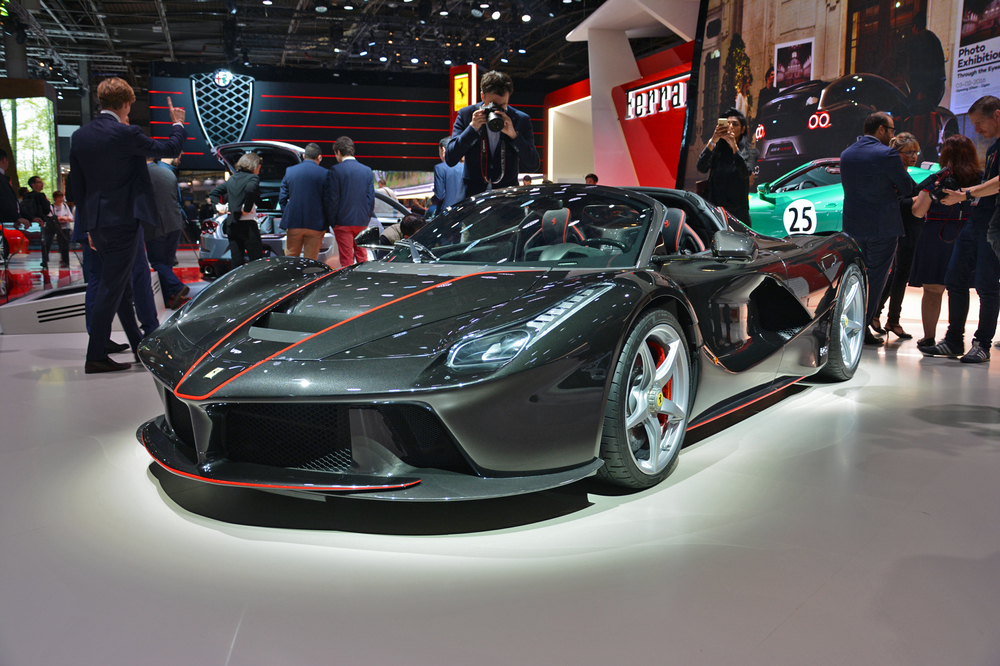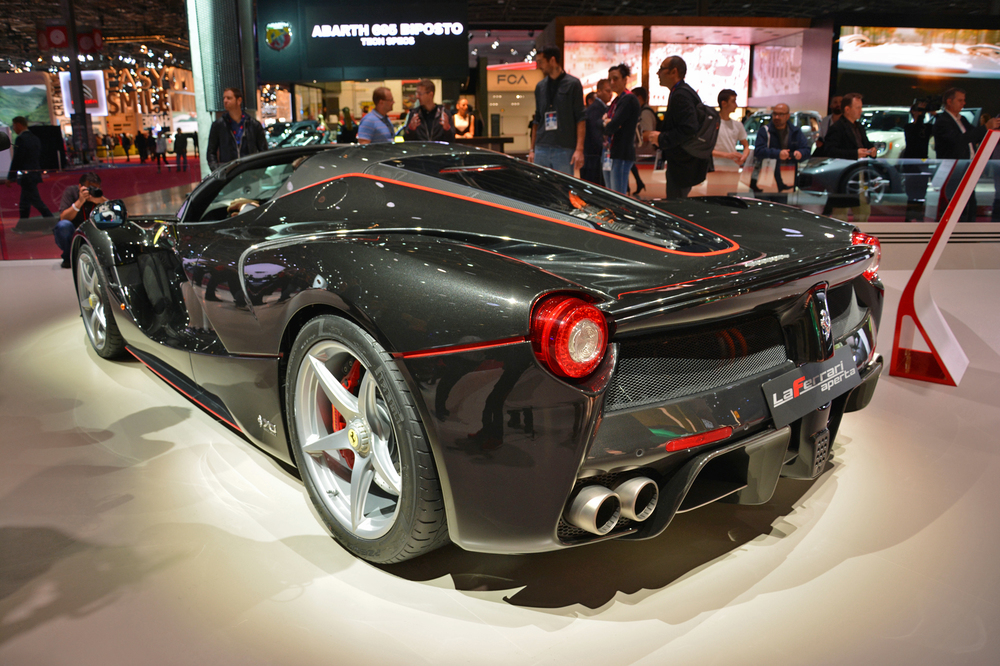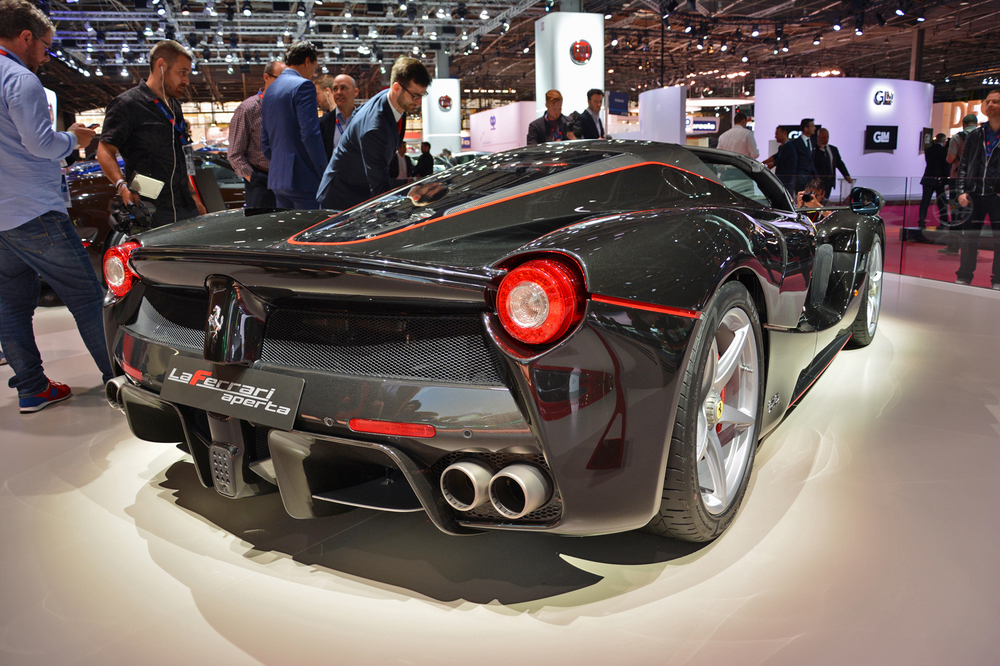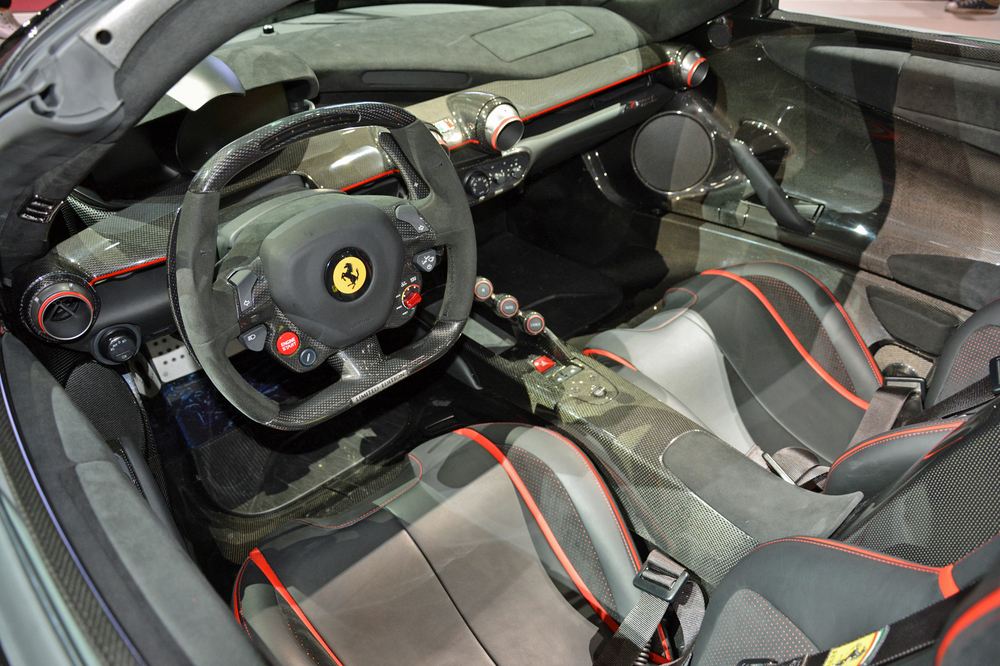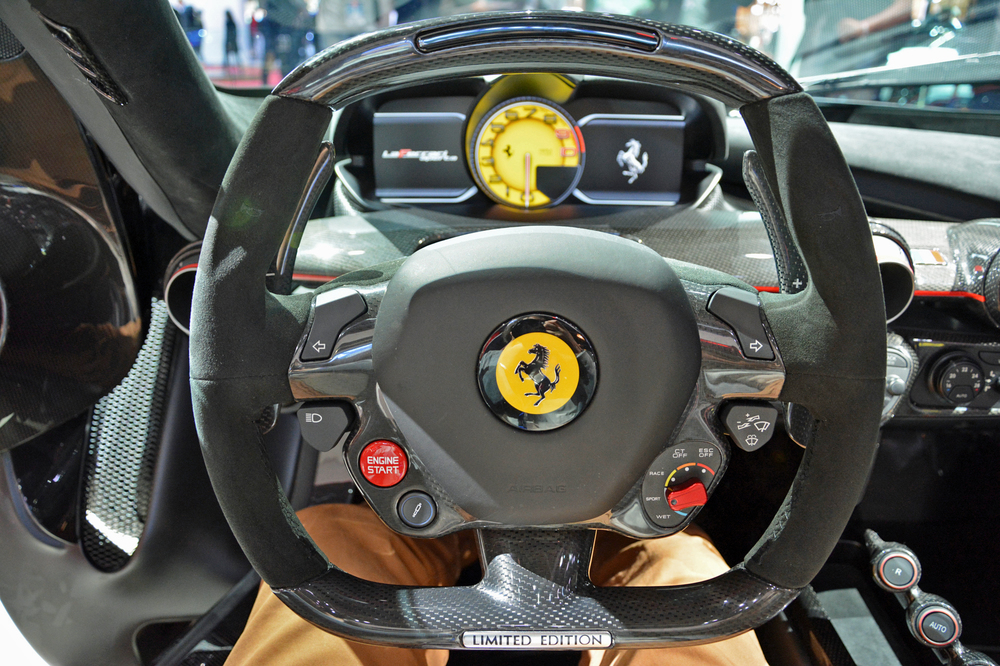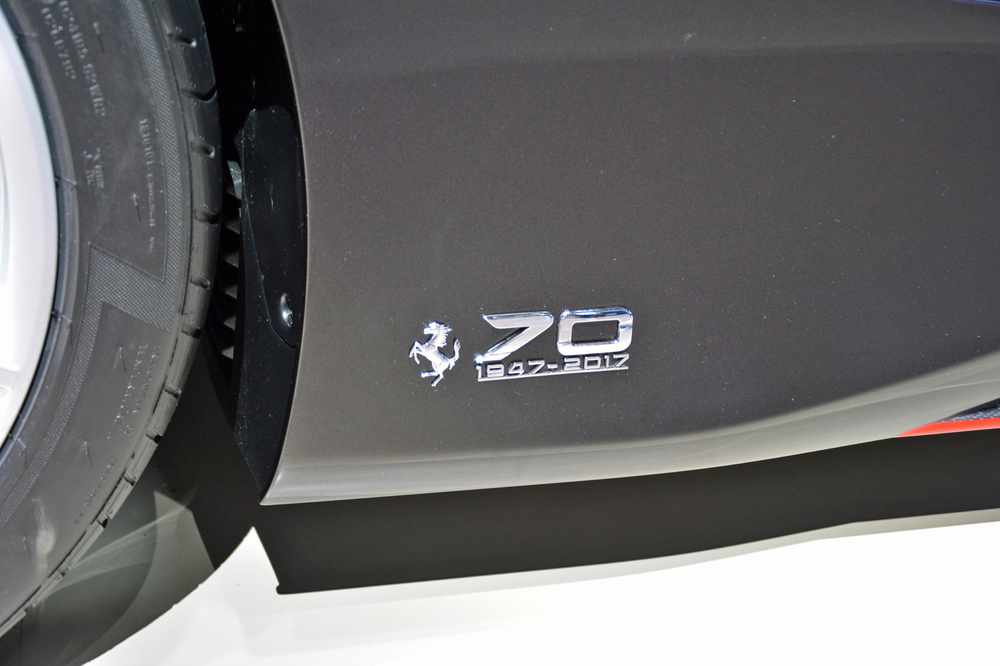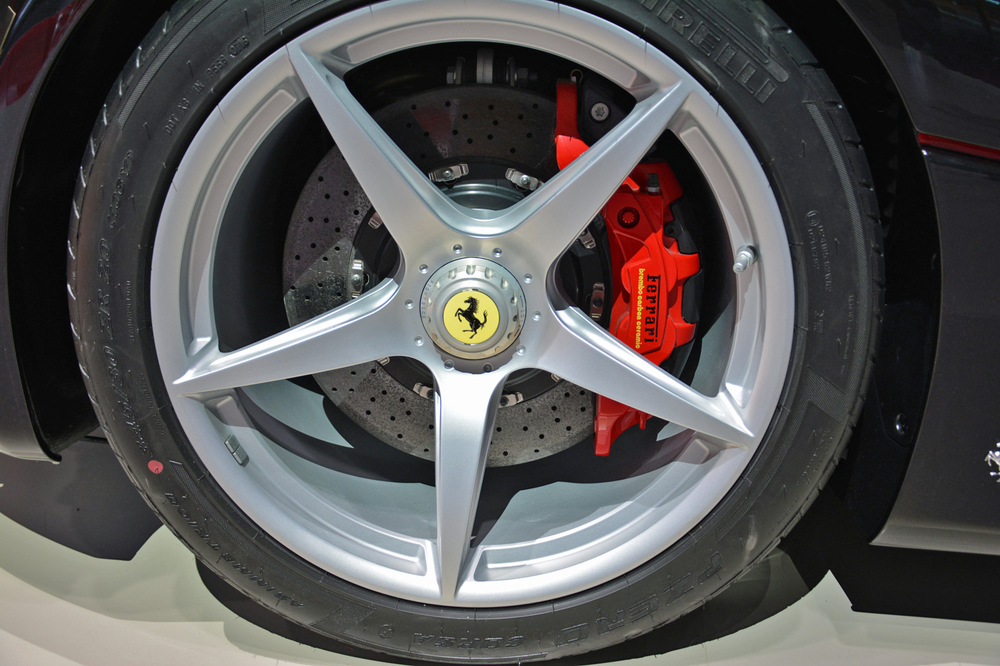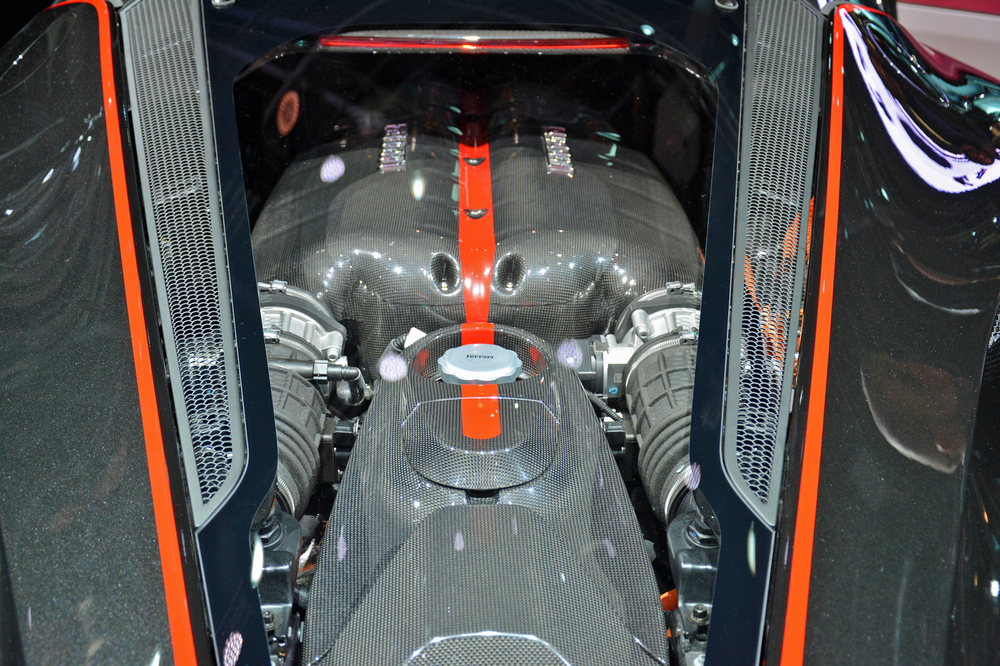Ferrari certainly took its time rolling out a convertible version of its LaFerrari hybrid supercar. The the LaFerrari hardtop debuted in 2013 and quickly disappeared after a production run of just 499 cars. But the convertible LaFerrari wasn’t publicly announced until this past July (customers likely got an earlier heads-up), and the car itself is just now making its debut at the 2016 Paris Motor Show.
Known as the LaFerrari Aperta, the topless version is virtually identical to the LaFerrari coupe, with some tweaks to accommodate the removable roof. That roof, by the way, is a soft top, although a carbon fiber hard top is optional. To account for the loss in structural rigidity from removing the roof, engineers reinforced the chassis. They also made adjustments to the cooling system, because airflow changes with the roof off.
Probably the most complex job, though, was adapting the coupe’s butterfly doors to the Aperta. This involved changing the angle that the doors open, and adding a carbon-fiber insert to allow them to rotate. The latter was done for safety reasons as well, according to Ferrari, although the carmaker did not say exactly what the concerns were.
The powertrain is completely unchanged from the LaFerrari coupe. A 6.3-liter V12 works with an electric motor to produce a staggering 949 horsepower and 663 pound-feet of torque, which is sent to the rear wheels through a seven-speed, dual-clutch transmission. Ferrari boasts of 0 to 62 mph in under three seconds and a top speed of 217 mph, the same as the LaFerrari hardtop.
2016 Paris Auto Show: Mercedes-Benz Generation EQ concept debuts in Paris
Previous rumors indicated Ferrari would build just 150 LaFerrari Aperta copies, but reports now indicate it will actually build 200 cars, and that some cars will be used in Ferrari’s 70th anniversary celebrations next year. The entire production run is already sold out.
In addition to launching the LaFerrari Aperta, Ferrari will mark its 70th anniversary with limited editions of the F12 Berlinetta, 488 GTB, California T, and 488 Spider in special liveries honoring the company’s racing heritage. Production of these models will total 350 cars.
